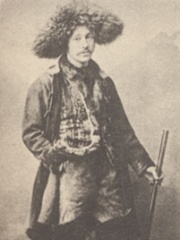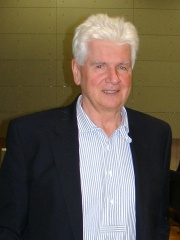
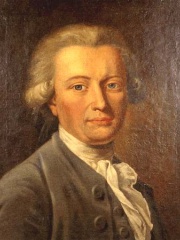
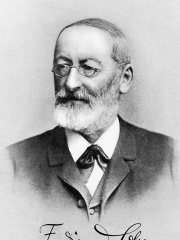
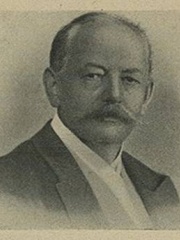
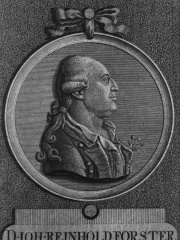
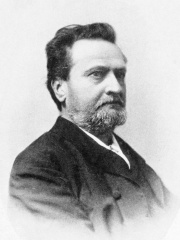
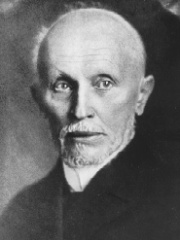
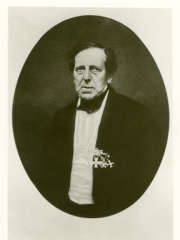
The Most Famous
BIOLOGISTS from Poland
This page contains a list of the greatest Polish Biologists. The pantheon dataset contains 1,097 Biologists, 20 of which were born in Poland. This makes Poland the birth place of the 10th most number of Biologists behind Austria, and Italy.
Top 10
The following people are considered by Pantheon to be the top 10 most legendary Polish Biologists of all time. This list of famous Polish Biologists is sorted by HPI (Historical Popularity Index), a metric that aggregates information on a biography's online popularity. Visit the rankings page to view the entire list of Polish Biologists.

1. Günter Blobel (1936 - 2018)
With an HPI of 72.27, Günter Blobel is the most famous Polish Biologist. His biography has been translated into 58 different languages on wikipedia.
Günter Blobel (German pronunciation: [ˈɡʏntɐ ˈbloːbl̩] ; May 21, 1936 – February 18, 2018) was a Silesian German and American biologist and 1999 Nobel Prize laureate in Physiology for the discovery that proteins have intrinsic signals that govern their transport and localization in the cell.

2. Georg Forster (1754 - 1794)
With an HPI of 72.07, Georg Forster is the 2nd most famous Polish Biologist. His biography has been translated into 41 different languages.
Johann George Adam Forster, also known as Georg Forster (German: [ˈɡeːɔʁk ˈfɔʁstɐ]; 27 November 1754 – 10 January 1794), was a German geographer, naturalist, ethnologist, travel writer, journalist and revolutionary. At an early age, he accompanied his father, Johann Reinhold Forster, on several scientific expeditions, including James Cook's second voyage to the Pacific. His report of that journey, A Voyage Round the World, contributed significantly to the ethnology of the people of Polynesia and remains a respected work. As a result of the report, Forster, who was admitted to the Royal Society at the early age of twenty-two, came to be considered one of the founders of modern scientific travel literature. After returning to continental Europe, Forster turned toward academia. He taught natural history at the Collegium Carolinum in the Ottoneum, Kassel (1778–84), and later at the Academy of Vilna (Vilnius University) (1784–87). In 1788, he became head librarian at the University of Mainz. Most of his scientific work during this time consisted of essays on botany and ethnology, but he also prefaced and translated many books about travel and exploration, including a German translation of Cook's diaries. Forster was a central figure of the Enlightenment in Germany, and corresponded with most of its adherents, including his close friend Georg Christoph Lichtenberg. His ideas, travelogues and personality influenced Alexander von Humboldt, one of the great scientists of the 19th century who hailed Forster as the founder of both comparative ethnology (Völkerkunde) and regional geography (Länderkunde). When the French took control of Mainz in 1792, Forster played a leading role in the Mainz Republic, the earliest republican state in Germany. During July 1793 and while he was in Paris as a delegate of the young Mainz Republic, Prussian and Austrian coalition forces regained control of the city and Forster was declared an outlaw. Unable to return to Germany and separated from his friends and family, he died in Paris of illness in early 1794, not yet 40. The standard author abbreviation G.Forst. is used to indicate this person as the author when citing a botanical name.

3. Ferdinand Cohn (1828 - 1898)
With an HPI of 69.90, Ferdinand Cohn is the 3rd most famous Polish Biologist. His biography has been translated into 36 different languages.
Ferdinand Julius Cohn (24 January 1828 – 25 June 1898) was a German biologist. He is one of the founders of modern bacteriology and microbiology.

4. Adolf Engler (1844 - 1930)
With an HPI of 67.76, Adolf Engler is the 4th most famous Polish Biologist. His biography has been translated into 34 different languages.
Heinrich Gustav Adolf Engler (25 March 1844 – 10 October 1930) was a German botanist. He is notable for his work on plant taxonomy and phytogeography, such as Die natürlichen Pflanzenfamilien (The Natural Plant Families), edited with Karl A. E. von Prantl. Even now, his system of plant classification, the Engler system, is still used by many herbaria and is followed by writers of many manuals and floras. It is still the only system that treats all 'plants' (in the wider sense, algae to flowering plants) in such depth. Engler published a prodigious number of taxonomic works. He used various artists to illustrate his books, notably Joseph Pohl (1864–1939), an illustrator who had served an apprenticeship as a wood-engraver. Pohl's skill drew Engler's attention, starting a collaboration of some 40 years. Pohl produced more than 33 000 drawings in 6 000 plates for Die naturlichen Pflanzenfamilien. He also illustrated Das Pflanzenreich (1900–1953), Die Pflanzenwelt Afrikas (1908–1910), Monographien afrikanischer Pflanzenfamilien (1898–1904) and the journals Engler's botanische Jahrbücher.
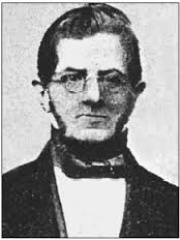
5. C. L. Gloger (1803 - 1863)
With an HPI of 64.50, C. L. Gloger is the 5th most famous Polish Biologist. His biography has been translated into 22 different languages.
Constantin Wilhelm Lambert Gloger (17 September 1803 near Grottkau, Silesia, Kingdom of Prussia – 30 December 1863 in Berlin) was a German zoologist and ornithologist. Gloger was the first person to recognise the structural differences between swallows and swifts, and also the first to put up artificial bat boxes. He was the originator of what is now known as Gloger's rule, which states that dark pigments increase in races of animals (birds were the examples in which he originally noticed the pattern) living in warm and humid habitats. He put forward this theory in his Das Abändern der Vögel durch Einfluss des Klimas (1833). The exact way this pattern is actually caused is still unclear, but in birds it has been suggested that darker pigmented plumage provides protection against feather-degrading bacteria, whose activity is greater in warm and humid regions. His other works include Gemeinnütziges Hand- und Hilfsbuch der Naturgeschichte (1841).

6. Johann Reinhold Forster (1729 - 1798)
With an HPI of 63.20, Johann Reinhold Forster is the 6th most famous Polish Biologist. His biography has been translated into 34 different languages.
Johann Reinhold Forster (German: [ˈfɔʁstɐ]; 22 October 1729 – 9 December 1798) was a German Reformed pastor and naturalist. Born in Dirschau, Pomeranian Voivodeship, Polish–Lithuanian Commonwealth (now Tczew, Poland), he attended school in Dirschau and Marienwerder before being admitted at the Joachimsthal Gymnasium in Berlin in 1745. Skilled in classical and biblical languages, he studied theology at the University of Halle. In 1753, he became a parson at a parish just south of Danzig. He married his cousin Justina Elisabeth Nicolai in 1754, and they had seven children; the oldest child was George Forster, also known as Georg. In 1765, Forster was commissioned by the Russian government to inspect the new colonies on the Volga. Accompanied by George on the journey, he observed the conditions of the colonists and made scientific observations that were later read at the Russian Academy of Sciences. After making a report that was critical of the Russian administration, Forster left for England without payment in 1766. In England, Forster became the successor of Joseph Priestley as tutor in modern languages and natural history at Warrington Academy where he worked for two years. He made contact with many other naturalists, published a textbook on mineralogy and translated works of the apostles of Linnaeus into English. Invited by the geographer Alexander Dalrymple, Forster moved to London in 1770 in preparation for participation in an East India Company expedition, but the plans fell through. Forster continued to publish translations and scientific works including contributions to North American zoology and botany. In February 1772, he was elected a Fellow of the Royal Society. After the withdrawal of Joseph Banks from the second voyage of James Cook, Forster accepted the position of naturalist on Cook's ship, where he was accompanied by his son George as draughtsman and assistant. On their three-year journey, they made the first recorded crossing of the Antarctic Circle and made observations and discoveries in New Zealand and Polynesia. When they returned to England, Forster published the botanical work Characteres generum plantarum. However, there was disagreement with Cook on who should write a narrative of the journey. After a lengthy argument, George wrote A Voyage Round the World, which appeared six weeks before Cook's account. Forster separately published his scientific Observations Made During a Voyage Round the World. Forster's pride and obstinacy caused him to fall out with many powerful men in England; after clearing some of his substantial debt with the aid of German patrons, he returned to Germany where he was a professor at the University of Halle from 1780. He oversaw the university's botanical garden for a few years and published in a wide range of sciences. Forster died in 1798 and is buried in Halle. He is commemorated in the names of various species of plants and animals, including the genera Forstera and Forsterygion.

7. Julius von Sachs (1832 - 1897)
With an HPI of 60.66, Julius von Sachs is the 7th most famous Polish Biologist. Her biography has been translated into 20 different languages.
Julius von Sachs (German: [zaks]; 2 October 1832 – 29 May 1897) was a German botanist from Breslau, Prussian Silesia. He is considered the founder of experimental plant physiology and co-founder of modern water culture. Julius von Sachs and Wilhelm Knop are monumental figures in the history of botany by first demonstrating the importance of water culture for the study of plant nutrition and modern plant physiology in the 19th century.

8. Johannes Thiele (1860 - 1935)
With an HPI of 60.48, Johannes Thiele is the 8th most famous Polish Biologist. His biography has been translated into 19 different languages.
Karl Hermann Johannes Thiele (1 October 1860 – 5 August 1935) was a German zoologist specialized in malacology. Thiele was born in Goldap, East Prussia. His Handbuch der systematischen Weichtierkunde (English edition published by the Smithsonian under the title Handbook of Systematic Malacology) is a standard work. From 1904 until his retirement in 1925 he was the curator of the malacological collection at the Museum für Naturkunde (Museum of Natural History) in Berlin. Thiele described more than 1.500 new species of molluscs; until today their types are deposited with the Museum of Natural History in Berlin. Especially important are his works on the Mollusca of the First German Antarctica Expedition and of the German Deep Sea Expedition aboard the vessel Valdivia. Thiele's classification of Gastropoda has been in use up to the past decade. It modified an earlier concept of Henri Milne-Edwards (1848) with three subclasses: Prosobranchia, Opisthobranchia and Pulmonata. Thiele's classification was based on overall similarity between the species. This classification has been modified over the years, one recent example being the classification of Ponder & Lindberg, 1997, based on phylogenetic arguments. He became the first to describe Geodia exigua in 1898.

9. Martin Rathke (1793 - 1860)
With an HPI of 60.37, Martin Rathke is the 9th most famous Polish Biologist. His biography has been translated into 20 different languages.
Martin Heinrich Rathke (25 August 1793, Danzig – 3 September 1860, Königsberg) was a German embryologist and anatomist. Along with Karl Ernst von Baer and Christian Heinrich Pander, he is recognized as one of the founders of modern embryology. He was the father of chemist Bernhard Rathke (1840–1923). He studied medicine and natural history at the University of Göttingen, later relocating to Berlin, where he received his doctorate in medicine (1818). In 1828 he was named professor of physiology, pathology and semiotics at the Imperial University of Dorpat. In 1832/33 he undertook research expeditions to Finland and to the Crimea. Rathke was a professor of zoology and anatomy at Königsberg from 1835 to 1860. In 1839, while based in Königsberg, he travelled to Scandinavia, where he conducted studies of marine organisms. He studied marine organisms and the embryonic development of sex organs. He was the first to describe the brachial clefts and gill arches in the embryos of mammals and birds. He also first described in 1839 the embryonic structure, now known as Rathke's pouch, from which the anterior lobe of the pituitary gland develops. He was the first to discover that the amphioxus was a separate taxon, and not the larva of a mollusk, as previously thought. He was the author of several writings on crustaceans, mollusks and worms, and also the author of works on vertebrates, such as the lemming and various reptiles.
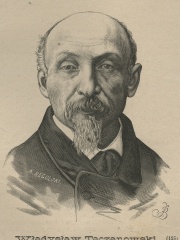
10. Władysław Taczanowski (1819 - 1890)
With an HPI of 58.89, Władysław Taczanowski is the 10th most famous Polish Biologist. His biography has been translated into 18 different languages.
Władysław Taczanowski ([vwaˈdɨ.swaf ta.t͡ʂaˈnɔf.skʲi]; 17 March 1819, in Jabłonna, Lublin Voivodeship – 17 January 1890, in Warsaw) was a Polish zoologist and collector of natural history who explored the Russian Far East and northern Africa. He specialized mainly in ornithology but also described numerous other taxa including reptiles and arachnids.
People
Pantheon has 20 people classified as Polish biologists born between 1729 and 1936. Of these 20, none of them are still alive today. The most famous deceased Polish biologists include Günter Blobel, Georg Forster, and Ferdinand Cohn.
Deceased Polish Biologists
Go to all RankingsGünter Blobel
1936 - 2018
HPI: 72.27
Georg Forster
1754 - 1794
HPI: 72.07
Ferdinand Cohn
1828 - 1898
HPI: 69.90
Adolf Engler
1844 - 1930
HPI: 67.76
C. L. Gloger
1803 - 1863
HPI: 64.50
Johann Reinhold Forster
1729 - 1798
HPI: 63.20
Julius von Sachs
1832 - 1897
HPI: 60.66
Johannes Thiele
1860 - 1935
HPI: 60.48
Martin Rathke
1793 - 1860
HPI: 60.37
Władysław Taczanowski
1819 - 1890
HPI: 58.89
Gustav Radde
1831 - 1903
HPI: 57.95
Michael Sela
1924 - 2022
HPI: 57.80
Overlapping Lives
Which Biologists were alive at the same time? This visualization shows the lifespans of the 19 most globally memorable Biologists since 1700.

